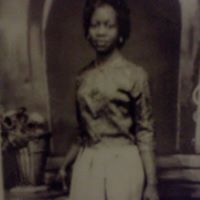Robert Kelly Frazer
age ~79
from Highland, MD
- Also known as:
-
- Robert K Frazer
- Robert Kelly Te Frazer
- Robert Kelly Frazer Revoca
- Kelley Frazer
- Robert K Frazier
- Kelly Frazer
- Roberty Frazer
- Frazer Roberty
- Phone and address:
-
6655 Luster Dr, Highland, MD 20777
(301)8540232
Robert Frazer Phones & Addresses
- 6655 Luster Dr, Highland, MD 20777 • (301)8540232
- Delmar, DE
- Los Angeles, CA
- San Marino, CA
- Severna Park, MD
- Bethany Beach, DE
- Columbia, MD
- Laurel, MD
Work
-
Position:Professional/Technical
Ranks
-
Licence:Connecticut - Active
-
Date:1971
Emails
p***r@juno.com
Lawyers & Attorneys

Robert Frazer - Lawyer
view sourceLicenses:
Connecticut - Active 1971

Robert Frazer - Lawyer
view sourceSpecialties:
Real Estate Law
Corporate Law
General Practice
Corporate Law
General Practice
ISLN:
907285517
Admitted:
1971
University:
Bowling Green State University, B.S.
Law School:
University of Connecticut, J.D.
Isbn (Books And Publications)

Over the Chihuahua and Santa Fe Trails, 1847-1848: George Rutledge Gibson's Journal
view sourceAuthor
Robert Walter Frazer
ISBN #
0826305903

Forts of the West: Military Forts and Presidios and Posts Commonly Called Forts West of the Mississippi to 1898
view sourceAuthor
Robert W. Frazer
ISBN #
0806112506

Forts and Supplies: The Role of the Army in the Economy of the Southwest, 1846-1861
view sourceAuthor
Robert W. Frazer
ISBN #
0826306306
Us Patents
-
Coherent Optics Blood Cell Classification System
view source -
US Patent:40701131, Jan 24, 1978
-
Filed:May 5, 1976
-
Appl. No.:5/683267
-
Inventors:Robert E. Frazer - La Canada CA
Marylou Ingram - Los Alamos NM -
Assignee:California Institute of Technology - Pasadena CA
-
International Classification:G01N 2100
G01N 3316
H01J 3912 -
US Classification:356104
-
Abstract:A system for classifying the various major types of blood cells is provided wherein blood cells are passed before a laser beam. The redirected light energy passing through the cell is applied to a detector array which provides a voltage spectrum representative of the spatial relationships of the object. This voltage spectrum is compared rapidly with different spectra representative of different blood cell classes. Whenever a best fit is detected by the comparing means, a count is scored in one of the cell classes. The same means is applicable to the analysis of other cell types such as cancer and exfoliated cells.
-
Apparatus For Endoscopic Examination
view source -
US Patent:41766628, Dec 4, 1979
-
Filed:Jun 17, 1977
-
Appl. No.:5/807597
-
Inventors:Robert E. Frazer - La Canada CA
-
Assignee:The United States of America as represented by the Administrator of the
National Aeronautics and Space Administration - Washington DC -
International Classification:A61B 106
A61M 2500 -
US Classification:128 6
-
Abstract:An endoscope is disclosed having a propulsion mechanism and at least one transmitter at the distal end transmitting bursts of energy waves (radio frequency or ultrasonic) for tracking the position of the distal end through the use of two or more transducers on the anterior or lateral surfaces of a patient. The propulsion mechanism may consist of two radially expandable bladders separated by an axially expandable bellows with only the forward bladder attached to the distal end so that by expanding and contracting them in proper sequence, propulsion of the endoscope is achieved. Alternate mechanisms comprise compliant paddles on the distal end directly on an articulated section, or compliant paddles on a rotatable sleeve on the distal end. The endoscope has a sheath which includes material having a sharp melting point slightly above body temperature so that the sheath may be made flexible at selected sections by applying current to separate heating wires in the sections of the sheath.
-
Strong Thin Membrane Structure For Use As Solar Sail Comprising Substrate With Reflective Coating On One Surface And An Infra Red Emissivity Increasing Coating On The Other Surface
view source -
US Patent:43212999, Mar 23, 1982
-
Filed:Dec 21, 1979
-
Appl. No.:6/106188
-
Inventors:Robert A. Administrator of the National Aeronautics and Space Frosch
Robert E. Frazer - La Canada CA -
International Classification:B05D 500
B05D 506
B32B 1508
B32B 3112
B32B 3300 -
US Classification:428247
-
Abstract:Production of strong lightweight membrane structure by applying a thin reflective coating such as aluminum to a rotating cylinder, applying a mesh material such as nylon over the aluminum coating, coating the mesh overlying the aluminum with a polymerizing material such as a para-xylylene monomer gas to polymerize as a film bound to the mesh and the aluminum, and applying an emissivity increasing material such as chromium and silicon monoxide to the polymer film to disperse such material colloidally into the growing polymer film, or applying such material to the final polymer film, and removing the resulting membrane structure from the cylinder. Alternatively, such membrane structure can be formed by etching a substrate in the form of an organic film such as a polyimide, or a metal foil, to remove material from the substrate and reduce its thickness, applying a thin reflective coating such as aluminum on one side of the substrate and applying an emissivity increasing coating such as chromium and silicon monoxide on the reverse side of the substrate.
-
Real-Time Analysis Keratometer
view source -
US Patent:46920030, Sep 8, 1987
-
Filed:Nov 7, 1983
-
Appl. No.:6/549157
-
Inventors:Iwao P. Adachi - Westminster CA
Yoshifumi Adachi - Westminster CA
Robert E. Frazer - La Canada CA -
International Classification:A61B 310
-
US Classification:351212
-
Abstract:A computer assisted keratometer in which a fiducial line pattern reticle illuminated by CW or pulsed laser light is projected on a corneal surface through lenses, a prismoidal beamsplitter quarterwave plate, and objective optics. The reticle surface is curved as a conjugate of an ideal corneal curvature. The fiducial image reflected from the cornea undergoes a polarization shift through the quarterwave plate and beamsplitter whereby the projected and reflected beams are separated and directed orthogonally. The reflected beam fiducial pattern forms a moire pattern with a replica of the first recticle. This moire pattern contains transverse aberration due to differences in curvature between the cornea and the ideal corneal curvature. The moire pattern is analyzed in real time by computer which displays either the CW moire pattern or a pulsed mode analysis of the transverse aberration of the cornea under observation, in real time. With the eye focused on a plurality of fixation points in succession, a survey of the entire corneal topography is made and a contour map or three dimensional plot of the cornea can be made as a computer readout in addition to corneal radius and refractive power analysis.
-
Coupling Apparatus For Ultrasonic Medical Diagnostic System
view source -
US Patent:41301129, Dec 19, 1978
-
Filed:Nov 15, 1976
-
Appl. No.:5/741749
-
Inventors:Robert E. Frazer - La Canada CA
-
Assignee:The United States of America as represented by the Administrator of the
National Aeronautics and Space Administration - Washington DC -
International Classification:A61B 1000
-
US Classification:128 2V
-
Abstract:Apparatus for the ultrasonic scanning of a breast or other tissue, including a cavity for receiving the breast, a vacuum for drawing the breast into intimate contact with the walls of the cavity, and transducers coupled through a fluid to the cavity to transmit sound waves through the breast. Each transducer lies at the end of a tapered chamber which has flexible walls and which is filled with fluid, so that the transducer can be moved in a raster pattern while the chamber walls flex accordingly, with sound transmission always occurring through the fluid.
-
Intracranial Surgical Operative Apparatus
view source -
US Patent:43866026, Jun 7, 1983
-
Filed:May 17, 1977
-
Appl. No.:5/797843
-
Inventors:Charles H. Sheldon - San Marino CA
Robert E. Frazer - La Canada CA
Harold R. Lutes - Pasadena CA -
International Classification:A61B 100
-
US Classification:128 4
-
Abstract:Apparatus for operating on the brain with minimal disturbances thereto, including a bullet-shaped expandable device with an end that can be closed for insertion through a small hole in the brain. The device can be expanded after insertion to leave an air pocket through which to extend viewing and cutting devices which enable operation on tumors or the like that lie at the end of the expanded device. A set of probes of varying diameters are also provided, to progressively enlarge a passage leading to the tumor, prior to inserting the expandable device.
License Records
Robert M Frazer
License #:
3966 - Active
Category:
Nursing Home Administrator
Issued Date:
Jan 1, 1990
Resumes

Owner
view sourceWork:
Mcfeth Worldwide
Owner
Owner

Robert Frazer
view sourceSkills:
Microsoft Word

Robert Frazer
view sourceLocation:
United States

Program Manager At Verizon
view sourceLocation:
Baltimore, Maryland Area
Industry:
Telecommunications
Googleplus

Robert Frazer

Robert Frazer
Tagline:
Mr. Interesting!

Robert Frazer

Robert Frazer

Robert Frazer

Robert Frazer

Robert Frazer

Robert Frazer
Myspace

Robert Frazer Jr.
view source
Robert Frazer
view source
Robert Frazer
view source
Robert Frazer
view source
Robert Frazer
view source
Robert Frazer
view source
Robert L. Frazer
view source
Robert Frazer
view sourceClassmates

Robert Frazer
view sourceSchools:
Elkton High School Elkton MD 1968-1972
Community:
Teresa Terrie, Doug Simmers, George Mauk

Robert Frazer
view sourceSchools:
Fillmore Central High School Harmony MN 1995-1999
Community:
Gina Nielsen, Cristy Snow

Robert Frazer
view sourceSchools:
South Fork Croyle High School South Fork PA 1955-1959
Community:
Mike Schrader

Robert Frazer
view sourceSchools:
Escanaba Area High School Escanaba MI 1946-1950
Community:
Kristin Atkins, Wendy Pepin

Robert Frazer
view sourceSchools:
Lawnwood Elementary School Ft. Pierce FL 1984-1990, Dan McCarty Middle School Ft. Pierce FL 1990-1991, Forest Grove Middle School Ft. Pierce FL 1991-1993

Fillmore Central High Sch...
view sourceGraduates:
Shelly Grewe (1978-1982),
Robert Dahlke (1994-1998),
Kim Brunsvold (1992-1996),
Jessica Sveen (1995-1999),
Robert Frazer (1995-1999)
Robert Dahlke (1994-1998),
Kim Brunsvold (1992-1996),
Jessica Sveen (1995-1999),
Robert Frazer (1995-1999)

Lawnwood Elementary Schoo...
view sourceGraduates:
Robert Frazer (1984-1990),
Rochelle Demps (1986-1990),
Avonna Willingham (2001-2005),
Kathleen Bridges (1987-1992)
Rochelle Demps (1986-1990),
Avonna Willingham (2001-2005),
Kathleen Bridges (1987-1992)
Youtube
Flickr
Plaxo

Robert Frazer
view sourceTechnical Consultant at Universal Studio's Florida Past: Location Management at MTV Networks, Audio Engineer at Ultra Sound, Monitor Engineer at...

Robert Frazer
view sourceV.P. at Premier Events Management, Inc.
Get Report for Robert Kelly Frazer from Highland, MD, age ~79















